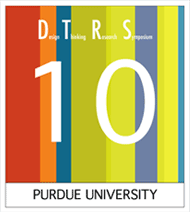Description
The datasets provided as part of DTRS-10 all relate to what may broadly be labeled as ‘design critiques’ in an educational context. As such, we chose to center our theoretical analysis on the evaluative reasoning taking place during expert appraisals of the design concepts that were being produced by industrial design students throughout the design process. This overall framing for our research allowed us to pursue a series of research questions concerning the dimensions of creative evaluation in design and their consequences for reasoning strategies and suggestions for moving further in the creative progress. Our transcript coding and analysis focused on three key dimensions of creativity, that is, originality, functionality and aesthetics. Each dimension was associated with a particular underpinning ‘logic’ that determined the distinctive ways in which these dimensions were seen to be evaluated in practice. In particular, our analysis clarified the way in which design dimensions triggered very different reasoning strategies such as running mental simulations, or making suggestions for design improvement, ranging from definitive ‘go/kill’ decisions right through to loose recommendations to continue to work on a concept for a period of time without any further directional steer beyond this general appraisal. Overall, we believe that our findings not only advance a theoretical understanding of evaluation behaviour that arises in design critiques, but also have important practical implications in terms of alerting expert design evaluators to the nature and consequences of their critical appraisals.
Keywords
Design critique, design reasoning, design evaluation, evaluative practices, mental simulation, design judgment
Date of Verison
January 2014
DOI
10.5703/1288284315938
Recommended Citation
Christensen, Bo T. and Ball, Linden J., "Dimensions of Creative Evaluation: Distinct Design and Reasoning Strategies for Aesthetic, Functional and Originality Judgments" (2014). Design Thinking Research Symposium. 2.
https://docs.lib.purdue.edu/dtrs/2014/Impact/2
Presentation slides
Dimensions of Creative Evaluation: Distinct Design and Reasoning Strategies for Aesthetic, Functional and Originality Judgments
The datasets provided as part of DTRS-10 all relate to what may broadly be labeled as ‘design critiques’ in an educational context. As such, we chose to center our theoretical analysis on the evaluative reasoning taking place during expert appraisals of the design concepts that were being produced by industrial design students throughout the design process. This overall framing for our research allowed us to pursue a series of research questions concerning the dimensions of creative evaluation in design and their consequences for reasoning strategies and suggestions for moving further in the creative progress. Our transcript coding and analysis focused on three key dimensions of creativity, that is, originality, functionality and aesthetics. Each dimension was associated with a particular underpinning ‘logic’ that determined the distinctive ways in which these dimensions were seen to be evaluated in practice. In particular, our analysis clarified the way in which design dimensions triggered very different reasoning strategies such as running mental simulations, or making suggestions for design improvement, ranging from definitive ‘go/kill’ decisions right through to loose recommendations to continue to work on a concept for a period of time without any further directional steer beyond this general appraisal. Overall, we believe that our findings not only advance a theoretical understanding of evaluation behaviour that arises in design critiques, but also have important practical implications in terms of alerting expert design evaluators to the nature and consequences of their critical appraisals.


Comments
This conference presentation was developed into a book chapter that was published in “Analyzing Design Review Conversations,” edited by Robin S. Adams and Junaid A. Siddiqui (2016, Purdue University Press), which can be found here:http://www.thepress.purdue.edu/titles/analyzing-design-review-conversations.